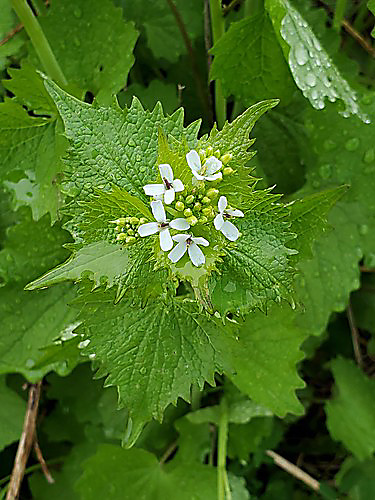
By Dean Vaglia
Leader Staff Writer
As part of its ongoing project to improve the health of local ecosystems, Oakland County Cooperative Invasive Species Management Area (CISMA) will pull up invasive garlic mustard plants along the Polly Ann Trail on Saturday, May 14.
Volunteers will meet up at the Indianwood Rd. parking lot around 9 a.m. and pull the invasive plants out between Indianwood and Drahner roads until 12 p.m.
“It is called garlic mustard because the leaves — which actually are edible — have a garlicky scent and taste to them,” Erica Clites, Oakland County CISMA director, said. “It is a herbaceous plant that is an invasive species and can crowd out a lot of woodland species like trillium, trout lily [and] a lot of the nice wildflowers we would see.”
Garlic mustard is a biennial identified by its four white petals and distinctive heart-shaped leaves. It is fairly low to the ground in its first year, stays green year-round before springing up in its second year.
“When that second-year plant grows up tall and has the four white flowers, there are really not a lot of other plants that look like that,” Clites said. “Once you see it a few times it is pretty easy to recognize.”
Garlic mustard is a common invasive species in Michigan, with Michigan State University dubbing the plant “one of Michigan’s most notorious woodland invasive weeds” in a 2020 writeup on the plant.
“It is definitely around, I would say, in pretty much every community in Oakland County at least at some level,” Clites said. “The amount just depends on whether there is some nearby and whether people are trying to manage it or not.”
Garlic mustard spreads through the “hundreds of thousands of seeds” the plants produce, which get picked up by passersby and unwittingly planted elsewhere.
“If there is a lot of garlic mustard in [an area] the seeds could be in the mud that’s on [a hiker’s] boots and they could walk to a new area and spread it,” Clites said. “And also just locally within an area it is already in, [garlic mustard] is going to expand because each of the plants that flower produce seeds.”
Getting rid of garlic mustard plants requires pulling the whole plant — especially the roots — out of the ground after the plant has flowered but before it has “gone to seed.” Disposal of garlic mustard is rather straightforward with the best practice being to throw it out with regular, non-compost trash to prevent further spread. Drying and burning is another option, though Clites recommends simply throwing the plants away.
“If it is early enough in the season you could compost them,” Clites said. “And if it is getting to be closer [to blooming] because the seeds can actually develop somewhat even after the plant has been pulled out, then it is better to dispose of them in the trash.”
Another invasive plant CISMA will look for on May 14 is the purple flower dame’s rocket.
“When we did a pull of a different section … we did see some dame’s rocket, so that is going to be another one we will be looking for and removing if we find it,” Clites said.
People looking to take part in the pull can sign up at https://forms.gle/QzWXE8sJR3kLyMMU7. Clites recommends participants wear long sleeves and pants and use bug spray while taking part in the pull. Some gloves and bags will be provided. )

Leave a Reply